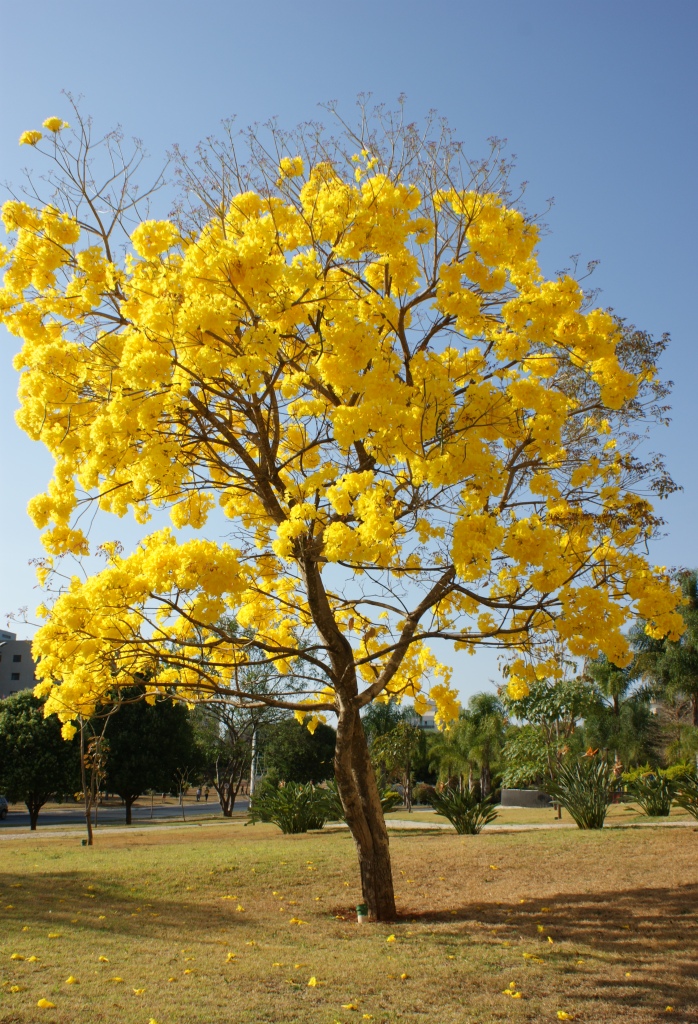Handroanthus Serratifolius on:
[Wikipedia]
[Google]
[Amazon]

 ''Handroanthus serratifolius'' is a species of tree, commonly known as yellow lapacho, pau d'arco, yellow poui, yellow ipe, pau d'arco amarelo, or ''ipê-amarelo''.
''Handroanthus serratifolius'' is a species of tree, commonly known as yellow lapacho, pau d'arco, yellow poui, yellow ipe, pau d'arco amarelo, or ''ipê-amarelo''.

 ''Handroanthus serratifolius'' is a species of tree, commonly known as yellow lapacho, pau d'arco, yellow poui, yellow ipe, pau d'arco amarelo, or ''ipê-amarelo''.
''Handroanthus serratifolius'' is a species of tree, commonly known as yellow lapacho, pau d'arco, yellow poui, yellow ipe, pau d'arco amarelo, or ''ipê-amarelo''.
Description
It is a tree native to forests throughout Central andSouth America
South America is a continent entirely in the Western Hemisphere and mostly in the Southern Hemisphere, with a relatively small portion in the Northern Hemisphere at the northern tip of the continent. It can also be described as the sout ...
. This plant grows in the cerrado
The ''Cerrado'' (, ) is a vast ecoregion of tropical savanna in eastern Brazil, particularly in the states of Goiás, Mato Grosso do Sul, Mato Grosso, Tocantins, Minas Gerais, and the Federal District. The core areas of the Cerrado biome are the ...
vegetation
Vegetation is an assemblage of plant species and the ground cover they provide. It is a general term, without specific reference to particular taxa, life forms, structure, spatial extent, or any other specific botanical or geographic characte ...
of Brazil
Brazil ( pt, Brasil; ), officially the Federative Republic of Brazil (Portuguese: ), is the largest country in both South America and Latin America. At and with over 217 million people, Brazil is the world's fifth-largest country by area ...
, reaching up to French Guiana
French Guiana ( or ; french: link=no, Guyane ; gcr, label=French Guianese Creole, Lagwiyann ) is an overseas department/region and single territorial collectivity of France on the northern Atlantic coast of South America in the Guianas. ...
, Bolivia, Paraguay
Paraguay (; ), officially the Republic of Paraguay ( es, República del Paraguay, links=no; gn, Tavakuairetã Paraguái, links=si), is a landlocked country in South America. It is bordered by Argentina to the south and southwest, Brazil to th ...
and Northern Argentina
Argentina (), officially the Argentine Republic ( es, link=no, República Argentina), is a country in the southern half of South America. Argentina covers an area of , making it the second-largest country in South America after Brazil, th ...
.
It is one of the largest and strongest of tropical forest trees, growing up to tall while the base can be in diameter.
Uses
It is a commercially farmed hardwood notable for its extreme hardness and resistance to fire and pests. It is sometimes traded as an "ironwood
Ironwood is a common name for many woods or plants that have a reputation for hardness, or specifically a wood density that is heavier than water (approximately 1000 kg/m3, or 62 pounds per cubic foot), although usage of the name ironwood in E ...
", or just as "ipê
''Handroanthus'' is a genus of flowering plants in the family Bignoniaceae.David J. Mabberley. 2008. ''Mabberley's Plant-Book'' third edition (2008). Cambridge University Press: UK. It consists of 30 species of trees, known in Latin America by ...
" (the entire genus ''Tabebuia''), or as lapacho
Lapacho or taheebo is herbal tea made from the inner bark of the pau d'arco tree ''Handroanthus impetiginosus''.
Lapacho is used in the herbal medicine of several South and Central American indigenous peoples to treat a number of ailments inclu ...
(properly ''Handroanthus serratifolius'')
Chemistry
The bark of ''Handroanthus serratifolius'' contains chemical compounds includinglapachol
Lapachol is a natural phenolic compound isolated from the bark of the lapacho tree.Record, Samuel J.. "Lapachol" pages 17-19. In: ''Tropical Woods'' (1925). This tree is known botanically as ''Handroanthus impetiginosus'', but was formerly known ...
, quercetin
Quercetin is a plant flavonol from the flavonoid group of polyphenols. It is found in many fruits, vegetables, leaves, seeds, and grains; capers, red onions, and kale are common foods containing appreciable amounts of it. It has a bitter flavor ...
, and other flavonoids.
National Flower of Brazil
The national flower of Brazil is the ipe-amarelo. The ipe-amarelo is actually a flowering tree that blooms in bright yellow flowers during the months of September and October. Blooms only last about a week.References
External links
serratifolius Trees of Central America Trees of South America Trees of Brazil Trees of Bolivia Trees of Colombia Trees of Ecuador Trees of Peru Trees of Guyana Trees of Suriname Trees of Venezuela Trees of Trinidad and Tobago Trees of French Guiana Flora of the Cerrado Medicinal plants of South America Trees of Panama {{tree-stub